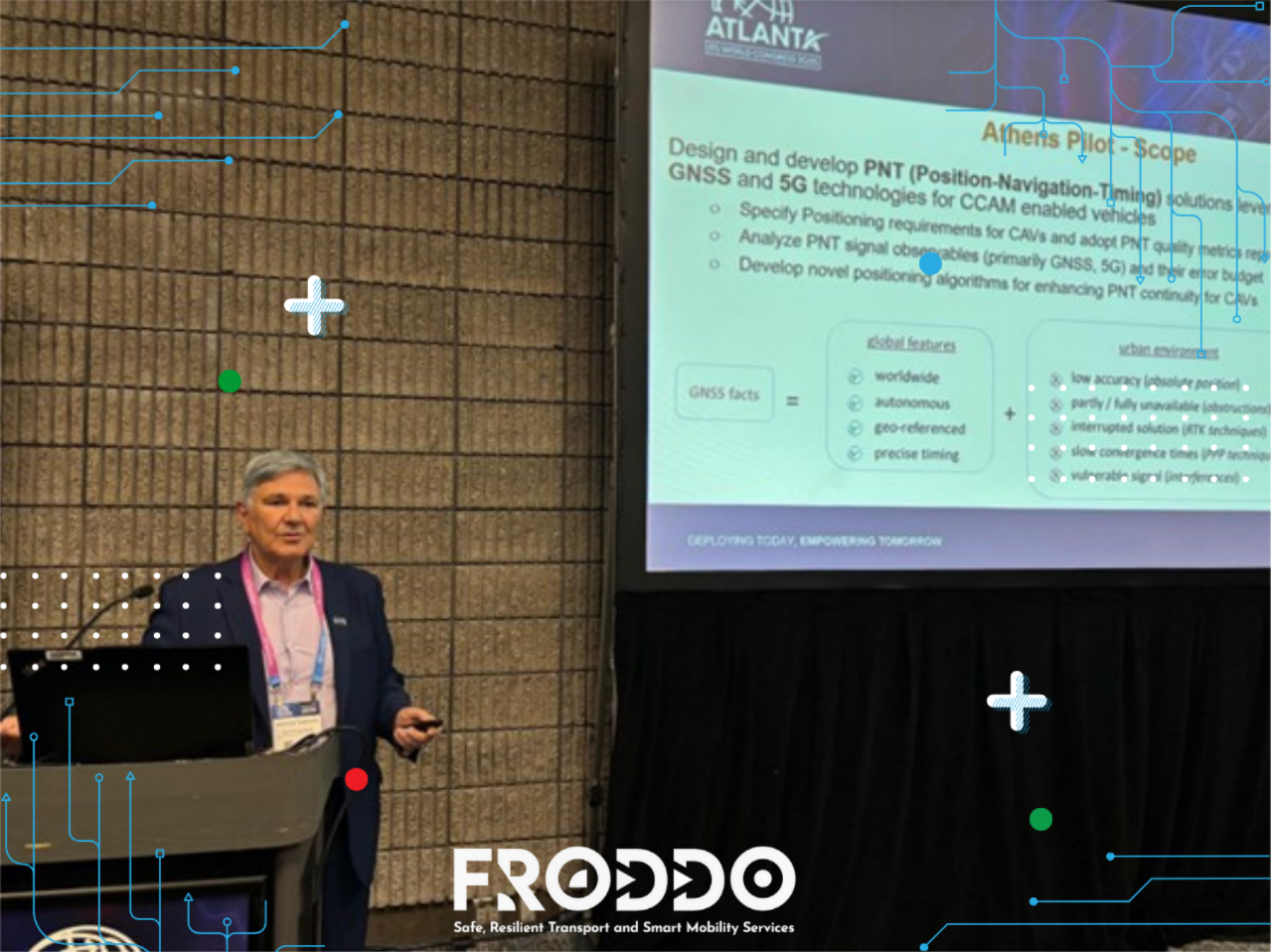
Between August 24 to 28, 2025, the FRODDO project participated in the ITS World Congress 2025, one of the largest global gatherings showcasing innovation and future trends in smart mobility and transport systems.
Representing the project on behalf of ERTICO – ITS Europe, the project’s coordinator, Dr. Nikos Tsampieris highlighted FRODDO’s vision and advancements in Positioning, Navigation, and Timing (PNT) solutions for Connected, Cooperative, and Automated Mobility (CCAM). Through two high-level speeches, Dr. Tsampieris presented how FRODDO is pushing the boundaries of resilient, accurate, and multi-sensor navigation for safe and sustainable mobility.
On Sunday, August 24, during the session SIS10: Space Based Technologies for PNT in Road Mobility – The European Perspective, Dr. Tsampieris introduced the talk “Infrastructure-enabled PNT solutions for increased ODD continuity – the FRODDO approach.” He outlined how the project integrates 5G connectivity, inertial measurement units, and multi-sensor fusion at the Athens pilot site, ensuring higher accuracy and reliability even in challenging environments such as tunnels or urban canyons. The session shed light on Europe’s efforts to strengthen PNT systems by combining multi-constellation GNSS, alternative PNT sources, and cybersecurity frameworks to support next-generation CCAM applications.
Later, on Thursday, August 28, Dr. Tsampieris contributed to the session SIS66: Traffic Efficiency and Safety Through CCAM: Enhancing Physical and Digital Infrastructure (PDI) in Europe, Canada and the US, with the presentation “A Federated cyber-physical infrastructure for ODD continuity (FRODDO).” This intervention highlighted how FRODDO’s federated approach to Physical and Digital Infrastructure (PDI) enables a seamless integration of CCAM technologies across urban areas, improving traffic efficiency, enhancing road safety, and fostering automation readiness.
FRODDO’s presence at #ITSWC2025 underlined the project’s central role in advancing next-generation mobility systems in Europe and beyond. By demonstrating its innovative pilots and infrastructure-enabled solutions, the project contributes not only to technological breakthroughs in positioning and connectivity but also to the broader goal of building a safer, greener, and more resilient mobility ecosystem.
